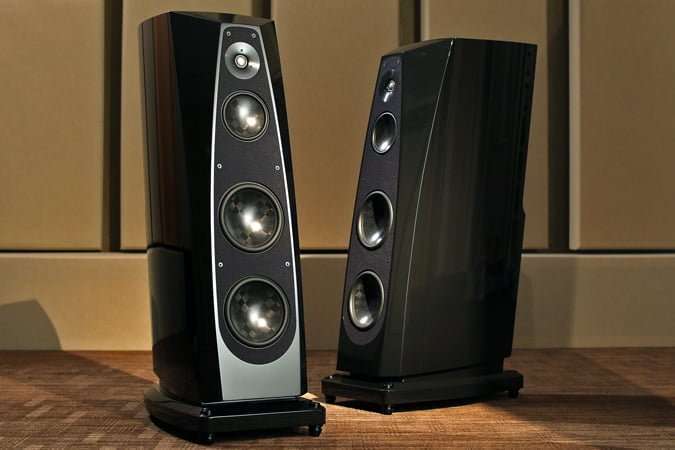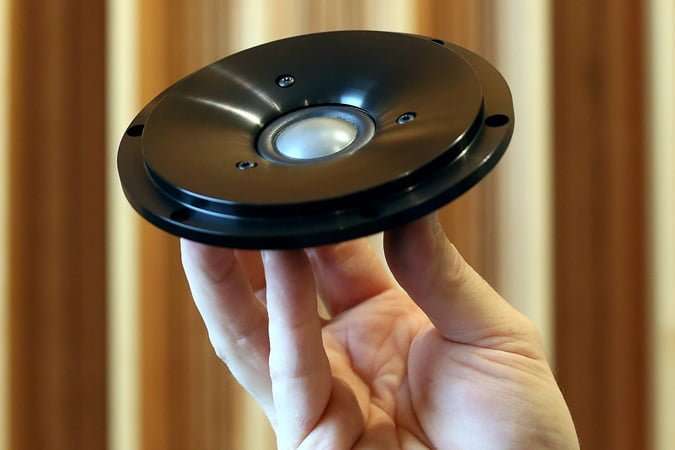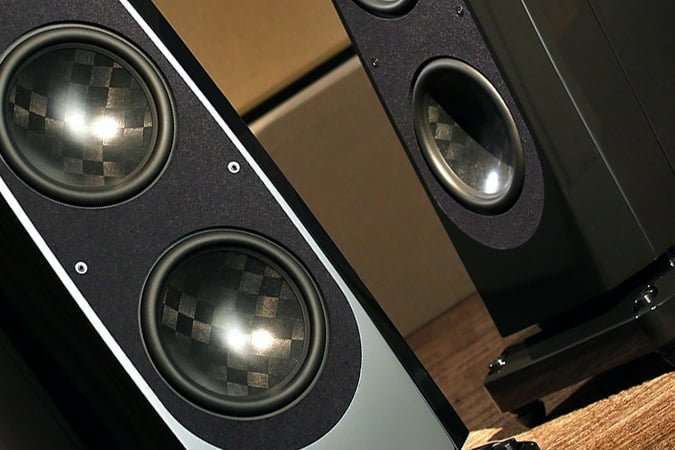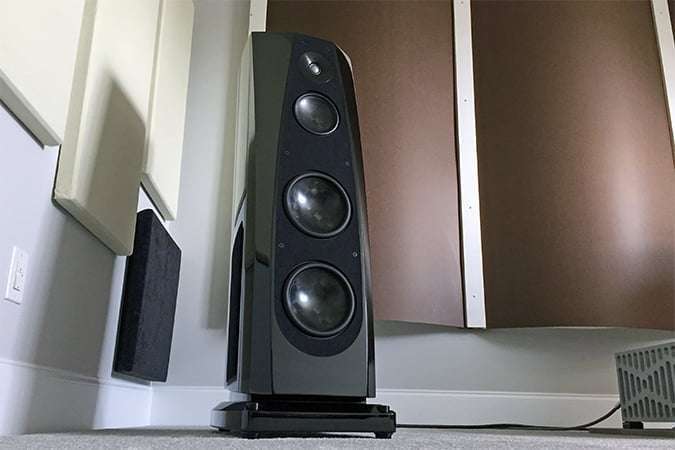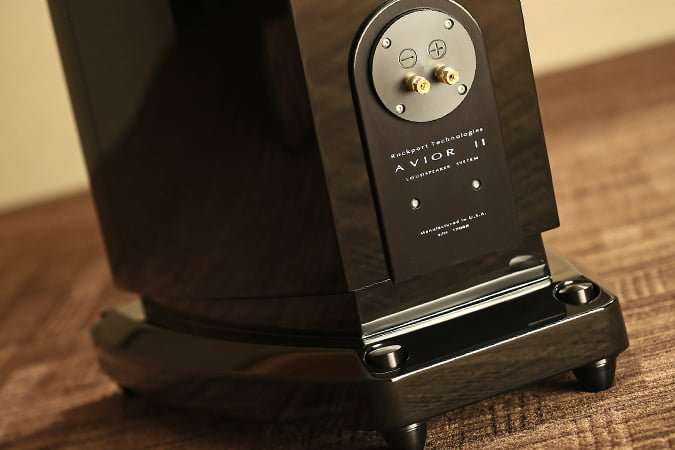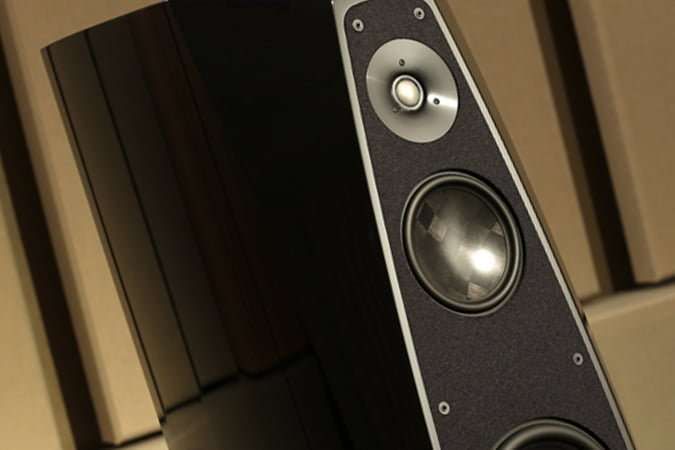- Written by Jeff Fritz
High-end audio gear can get expensive, but the meaning of expensive depends on the context. For the sake of SoundStage! Ultra, I put most equipment in one of two mental categories: house money and car money.
In the US, the median price of a home is $236,100 (all prices USD); the average transaction price of a light vehicle is $37,577. I used to review house-money gear, and these days many manufacturers make loudspeakers priced in that category. But most folks can’t afford a second home; it’s fair to say that you must be pretty wealthy to afford that much for a pair of speakers.
Car money is different. Lots of my friends could, if they chose, afford to buy a second car. Sure, a shiny red convertible that doesn’t replace the daily driver is still a major purchasing decision, but lots of folks can stretch their budgets to do it — especially if the spouse is onboard. My point: If you can afford the shiny red convertible, you can alternatively afford a fine set of loudspeakers in the car money category. I’ve shifted my focus to those products.
The Rockport Technologies Avior II loudspeaker is squarely in car-money territory. At $38,500/pair, it won’t be a casual purchase for any but the superrich — but at the same time, it costs an order of magnitude less than a number of loudspeaker models I saw and heard at High End 2019, in Munich, Germany. Meeting a price such as the Avior II’s sets a speaker designer some stiff challenges. For that kind of money, the buyer expects — and should expect — a lot. Materials, finish, design — and, of course, sound quality — will all be expected to be top shelf, but there will still be budgetary tradeoffs that won’t constrain the designer of a house-money speaker.
Having owned several Rockport models over the years, and reviewed even more, I know Rockport Technologies well. For over a decade now, the company has consistently been among the top three speaker brands I recommend to anyone shopping at this price level — and, as this SoundStage! InSight video clearly shows, in 2019 the company remains in top form.
Although founder Andy Payor still designs and dials in each speaker that goes out the door of Rockport’s facilities in South Thomaston, Maine, it was the company’s new owner-president, Josh Clark, who came to my home to set up the Avior IIs. Clark told me that the II is significantly better than the original Avior, a speaker I’ve heard and liked at many audio shows over the years. My expectations were high.
The II
From the day they arrived, in two wooden crates with a combined shipping weight of 700 pounds, it was clear to me that the Avior II is a serious endeavor. Perhaps the most obvious change from Avior I to Avior II, at least at first glance, is the addition of the waveguide housing the tweeter. Although the 1” beryllium dome at the center of the waveguide is part of the same drive-unit used in the original Avior, the addition of Rockport’s custom waveguide is so significant that it might as well be a new driver.
The waveguide serves two primary purposes: First, it narrows the tweeter’s dispersion at the bottom of its passband, to make it more closely match the dispersion of the midrange driver. This improves that all-important acoustic transition between midrange and tweeter, particularly at the crossover frequency. Second, the waveguide increases the tweeter’s sensitivity by about 5dB in the lowest portion of its operating range. This means that the tweeter needs less power from the amplifier to produce a given output level, and the benefits are enormous: much higher output with much less distortion. Rockport explains: “The waveguide improves the acoustic impedance match of the tweeter at the low end of its range, and allows for lower distortion and greater dynamic expression from the tweeter itself, as well as improved dispersion characteristics at the midrange/tweeter crossover point.”
Although the tweeter’s motor and diaphragm assembly wasn’t designed by Rockport, the Avior II’s other drivers were. The single 6” midrange and two 9” woofers, designed from scratch by Andy Payor, feature some seriously cool-looking cones. According to Payor, the cones are formed using “ultra-high modulus carbon fiber fabric skins which are pre-impregnated with a custom formulated, toughened epoxy resin system and consolidated to a Rohacell core under high pressure and heat.” Rockport claims that these cones have the highest ratio of stiffness to weight of any speaker cones now made, and that their behavior is entirely pistonic within each driver’s passband. In the midrange driver, this results in the cone’s first breakup mode occurring at 6.5kHz, and with an amplitude of only 3-4dB. When you consider that the midrange driver’s passband extends up to only about 2kHz before handing off to the tweeter, you can see that this should virtually eliminate midrange-cone-created distortions from the Avior II’s sound. The 6” midrange has a cast-aluminum frame, an oversize spider, a vented titanium voice-coil former, copper shorting rings, tapered pole pieces, and radiused venting through the motor system — all designed to reduce distortions. Payor explains the result of all this on the sound: “This ability to resolve low-level information is critical to reproducing the artistic nuance of music, as well as resolving the spatial cues of the recording environment, and enables the loudspeaker to transcend the drudgery of merely playing the notes.”
The 9” woofers are very similar to the 6” midrange driver in concept and execution, but of course are optimized to reproduce low frequencies. Payor claims that both models have extremely powerful 2” voice-coil-based motor systems with ample provision for high power handling and heat dissipation.
Each crossover network is fine-tuned for the specific unit of Avior II it’s installed in — a rare thing in commercially available loudspeakers. This allows Rockport to ensure that owners get what they’ve paid for: a genuinely neutral loudspeaker capable of reproducing a recording’s finest details. Such hand-tuning is synonymous with rigorous quality control, and should give buyers peace of mind. Each network is wired point to point to “avoid the parasitic effects of pc-board type construction,” using film/foil capacitors manufactured exclusively for Rockport, as well as custom-made inductors and Caddock power resistors. All components are matched to within a tolerance of 1%, and the entire crossover is potted, then sealed in a chamber in the speaker’s base.
The Avior II’s enclosure is made of MDF: a 6”-thick front baffle and “triple-laminated, constrained-mode damped, variable section thickness, curved side panels and [a]crowned top surface.” The panels’ chamfered edges help reduce edge diffraction, and the speaker’s raked-back stance improves time-domain behavior. Although many similarly priced speakers are made of more exotic materials, Rockport extolls their use of MDF, and what makes it perform as well as they claim: “Even though this is an MDF cabinet, it has enormous stiffness due to its large section thickness (stiffness increasing as the cube of the ratio of section thickness increase).”
Each Avior II measures 46.5”H x 15”W x 24.5”D and weighs 220 pounds. The speaker’s frequency response is specified as 25Hz-30kHz, -3dB, its sensitivity as 88dB/2.83V, and its impedance as 4 ohms, with a recommended minimum amplification of 50W. Grilles are included.
Setup
The night before the Avior IIs arrived, I prepped my listening room by uninstalling the TAD Evolution One TX speakers — but only after intently listening to the TADs one more time, to seal into my aural memory as much of their sound as possible, for eventual comparison with the Rockports.
I was fortunate that Rockport owner-president Josh Clark flew down from Maine to help me uncrate and set up the Avior IIs. Still, while moving their two 350-pound crates was a daunting task, removing the speakers from those crates was anything but. It’s a two-person job, but removal from the well-made wooden shipping crates went smoothly and quickly. After we’d unpacked them, Clark spent several hours trying them in different spots in the room. For this he had no special requirements or setup protocol — he just moved them and listened to them, as we all do when setting up speakers.
The Avior IIs sounded splendid in the first positions we tried — having already reviewed a handful of speaker models in this room, I always try new speakers in those spots first — but they sounded their very best, with optimal bass response and the sharpest imaging, when they were 10’ 6” from my listening chair, 9’ apart (measured from the tweeter centers), 2’ 3” from the sidewalls (measured from the tweeter centers), 3’ 3” from the front wall (measured from the rear baffles), and toed in so that the tweeter axes crossed just behind my head when I sat down to listen.
The system was my typical setup: a 2016 Apple MacBook Pro laptop computer running Roon and streaming Qobuz to a Hegel Music Systems HD30 digital-to-analog converter feeding a Boulder Amplifiers 2060 stereo power amplifier. Interconnects, speaker cables, and power cords were all Siltech Explorer models. The Apple and Hegel sat on an SGR Audio Model III Symphony equipment rack.
Sound
Because I’ve lived with other Rockport speakers, I think I now understand what this company does better than ever. Or maybe I’m just an older, wiser reviewer who can now better communicate his specific thoughts about products. Either way, before I dive into my song-by-song analysis, I want to give you more of an overview of what I think the Rockport Technologies Avior II is all about.
Describing the sounds of loudspeakers that reproduce the music on recordings with something approaching genuine neutrality is not as straightforward as it might seem. A speaker that measures neutrally at the listening position — i.e., one that produces a generally flat frequency response — probably won’t sound perfectly balanced to most listeners. On the other hand, if your speakers do sound balanced — read, good — they probably don’t measure perfectly flat at the listening position. Why?
The “Harman curve,” often mentioned in the reviews and articles of SoundStage! writer Brent Butterworth, can be described as the loudspeaker frequency-response curve that most listeners prefer. This curve tells us that listeners tend to like a sound that has a gradual increase in amplitude in the bass, and that gently decreases with increasing frequency. Plotted on a graph in the standard way, such a frequency response is a line that slopes gently downward from left to right. I could go more deeply into this, but those are the basics that you need to know.
Although each speaker designer has his or her own take on what frequency response sounds best, many are largely in agreement with what Harman concluded years ago. The room will, to some degree, help the speaker’s output approximate the Harman curve with room gain in the bass (a gradual increase in level of the lowest frequencies) and absorption of higher frequencies by carpets and furnishings (a gradual decrease in level in the highs). When a speaker whose frequency response measures relatively neutral or flat in an anechoic chamber is placed in an average room and its output is measured again, the result is often close to the Harman curve.
Every Rockport speaker model is measured, fine-tuned, and verified with listening by Andy Payor, and has always been. What I know about Payor and hear in his speakers is that he likes real bass — solid, punchy lows that listeners can feel throughout their bodies — and dislikes grating highs that can at first sound like increased detail, but are actually excess treble output. The sounds of his speakers reflect these preferences, and most listeners like what they hear.
I found the Avior II no exception. It had deep, full-bodied bass that most speakers of similar size can’t match. It also had a high-frequency balance that I never tired of — listening fatigue was never part of my Avior II experience.
When I listened to “Marseille,” from Ahmad Jamal’s Ballades (24-bit/96kHz FLAC, Jazz Village/Qobuz), the weight of Jamal’s left-hand notes was fully re-created by the Avior IIs, presenting in my room a convincing aural facsimile of an actual piano. Recordings of acoustic pianos played through speakers with lighter tonal balances don’t sound as realistic. If that were all there was to describe about the Avior II’s reproduction of “Marseille,” I’d move on — but it’s nowhere near the full story. At about 2:12 into this track, James Cammack’s subtle double-bass playing — this is a duo album — was fully distinguished from Jamal’s left-hand notes, as if an aural microscope had been trained on the two instruments. Through the Avior IIs, bass was never merely bass — their impressive delineation of low-end notes greatly added to my enjoyment of “Marseille.” As I continued listening, I realized even more that the low end contains real detail — and that there’s tons of it in this recording. Such detail is fully revealed only when the speakers are able to resolve such nuances and complexities at the bottom of the frequency response. The Avior IIs were easily able to accomplish this very rare feat.
A speaker’s sound is largely defined by its tonal balance — how it distributes energy throughout the audioband. But at the highest of the high end, a pleasing tonal balance alone is not enough. Rockport Technologies has long made speakers endowed with tremendous powers of resolution, from top to bottom of the audioband — if uncommon amounts of textural detail are on the recording, a pair of Rockport speakers will let you hear it in your room. It’s this rare attribute that audiophiles, and especially I, crave.
When I listened through the Avior IIs to “River Lea,” from Adele’s 25 (16/44.1 FLAC, XL/Columbia/Qobuz), I heard deeper into the electronic reverb added to her voice, and her inhalations before vocalizing, than I’ve been able to with most other speakers, regardless of cost. The midband in “River Lea” was basically neutral in tonality, but the dense midbass and info-packed lower midrange laid bare the slightly husky quality of Adele’s almost universally recognized voice. The same was true when I listened to Lauren Daigle’s music — these two singers’ voices have always sounded to me very much alike, though not identical. The Avior IIs gave each singer’s voice the unique combination of color, richness, and depth it possesses in real life, never failing to distinguish between them.
I used to cite tracks by Nickel Creek in my reviews, but haven’t in a while. During the band’s long hiatus (2007-2014), their former fiddler, Sara Watkins, released her second solo album, Sun Midnight Sun (16/44.1 FLAC, Nonesuch/Qobuz). Through the Avior IIs her fiddle sounded rosiny, and her voice in “When It Pleases You” was clear and tinged with emotion. Although this recording lacks wide dynamic range, the Avior IIs’ exceptional powers of resolution meant that I could better enjoy its various musical elements. A recording such as Sun Midnight Sun can sound too processed through some speakers because of their inability to reveal microdetail — sounds that should be distinguished from each other are instead mushed together. But I found that if a recording contains a detail, I heard it through the Avior IIs.
A TAD different
TAD’s Evolution One TX loudspeaker ($27,995/pair) and the Rockport Technologies Avior II have some physical similarities: each is a sleek, black, raked-back floorstander in gloss paint that puts most automobile finishes to shame. In both models, the fine details are attended to in every parameter — you won’t find a crooked nameplate or a misaligned grille or anything to complain about. However, for ten grand more, you get a lot more speaker in the Avior II. It has bigger woofers — 9” vs. 6.3” — with the attendant increase in internal volume, and weighs more than twice as much as the TAD: 220 vs. 101 pounds. And judging by the knuckle-rap test, the Rockport’s cabinet is far more inert. The Avior II is way more loudspeaker, and its 4” greater depth will require more room.
The sound of the Evolution One TXes was similar in many ways to that of the Avior IIs. Much like the Rockports, the TADs were warm and full in the bass, never grating in the highs. The TADs’ generous lows allowed the acoustic spaces of original recording venues to fully form in my room, though not as much as they did with the Avior IIs. Music never sounded too mellow through either speaker — there was always detail aplenty — nor did listening fatigue ever set in. In short, these speakers were tonally more alike than different, and that’s a good thing. Their designers clearly know what listeners like, and have imbued their creations with these qualities in large helpings. But that wasn’t the whole story.
What clearly differentiated the Avior II from the Evolution One TX was the Rockport’s ability to better differentiate sounds in the lower midrange, midbass, and low bass. This greater articulation and dexterity in the lower region of the audioband was a trick the TAD couldn’t come close to matching. The Evolution One didn’t produce one-note bass, but the Avior II let me hear the finer gradations in the lower frequencies that made Jonas Hellborg’s double-bass playing in “Iron Dog,” from his The Silent Life (16/44.1 FLAC, Day Eight Music/Qobuz), come to life in a way the TAD wasn’t up to. Through the TADs, individual strums in a series of same melted into each other, making the overall sound less real and less interesting — but through the Rockports, each strum was clearly its own musical and aural event. So it was no surprise that the Avior II could also go lower in the bass, and with greater power. The Avior II is a significantly better speaker all around, but from the mids down to the low bass the Rockport is in another world altogether.
Conclusion
The Rockport Technologies Avior II is easily one of the finest loudspeakers I’ve heard in the last five years. It combines an expertly voiced tonal balance that I can’t imagine anyone disliking with the ability to resolve the finest details in recordings, from the top to the very bottom of the audioband. In fact, until you hear these speakers, you very well may never have heard genuine bass detail. When you combine an exalted level of sound quality with qualities of build and fit’n’finish that are in the top 5% of speakers in the high end, you also have a slam-dunk recommendation from me and an easy Reviewers’ Choice recipient. Skip the new car. Buy a pair of Avior IIs, and drive off into the sunset — in your old car — one very happy audiophile.
. . . Jeff Fritz
jeff@soundstagenetwork.com
Associated Equipment
- Amplifier — Boulder Amplifiers 2060
- Preamplifier-DAC — Hegel Music Systems HD30
- Source — Apple MacBook Pro computer running Mojave 10.14.5, Roon, Qobuz streaming service
- Cables — Siltech Explorer interconnects, speaker cables, power cords
- Rack — SGR Audio Model III Symphony
Rockport Technologies Avior II Loudspeakers
Price: $38,500 USD per pair.
Warranty: Five years parts and labor.
Rockport Technologies
586 Spruce Head Road
South Thomaston, ME 04858
Phone: (207) 596-7151
Website: www.rockporttechnologies.com



